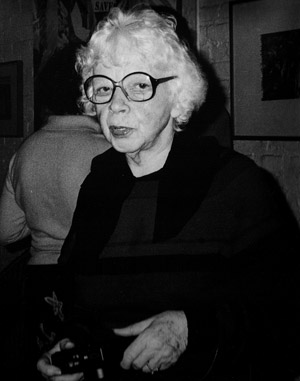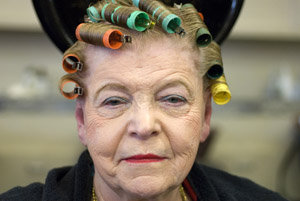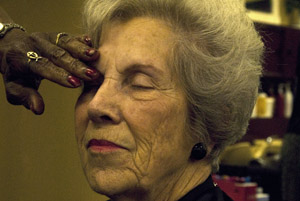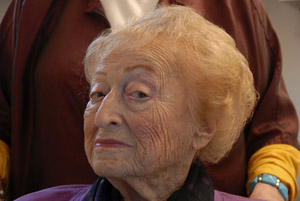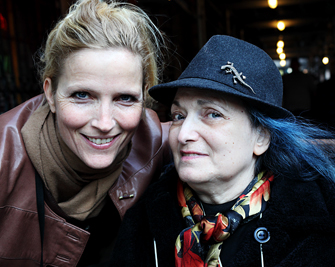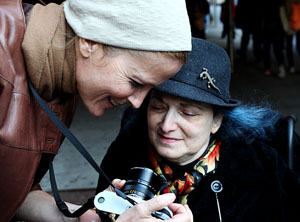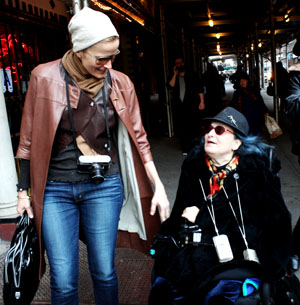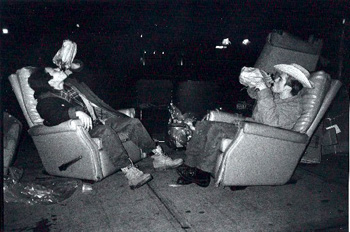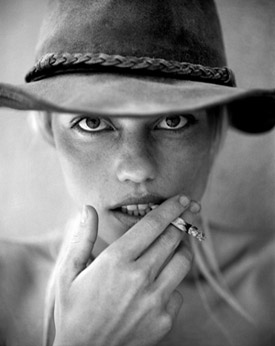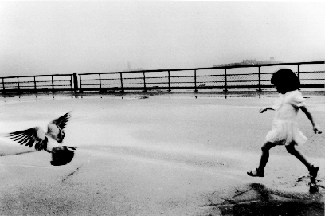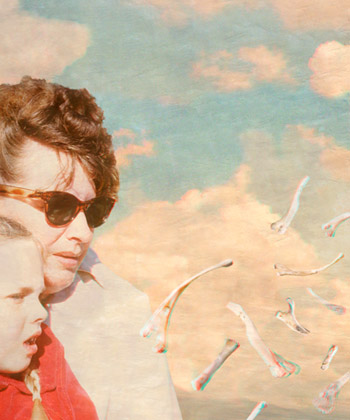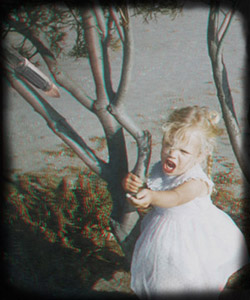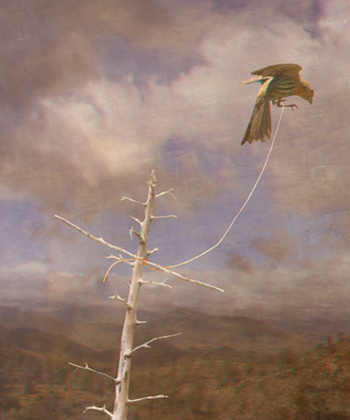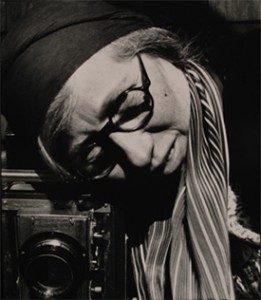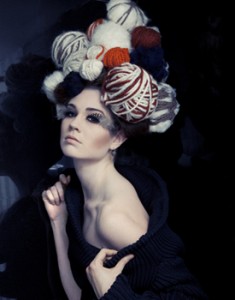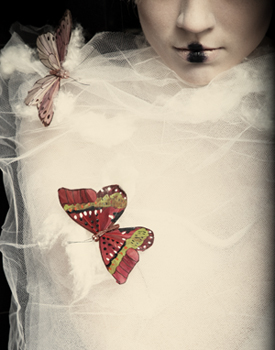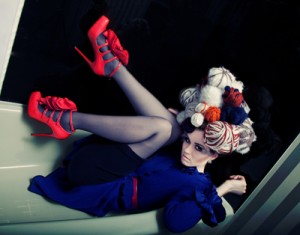Tag Archives: 30 x 30
30 By 30: Alice Sachs Zimet / Lisette Model
30 Women Photographers and the Women Photographers Who Inspired Them
A Blog Series in Honor of Women’s History Month, March 1 – 31
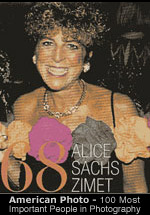 Alice Sachs Zimet is President of Arts + Business Partners, a company she founded in 1999 to consult on issues of corporate marketing and sponsorship in the arts. A pioneer in this field, she created the first Cultural Affairs Marketing Group at The Chase Manhattan Bank, and used the arts to brand Chase globally and generate over $2 billion in new business.
Alice Sachs Zimet is President of Arts + Business Partners, a company she founded in 1999 to consult on issues of corporate marketing and sponsorship in the arts. A pioneer in this field, she created the first Cultural Affairs Marketing Group at The Chase Manhattan Bank, and used the arts to brand Chase globally and generate over $2 billion in new business.
Zimet’s clients have included corporations like American Express, Barnes & Noble, Fleet Bank, and Sephora, as well as prominent cultural institutions like the Martha Graham Dance Company, International Center of Photography, Institut Van Gogh, Orpheus Chamber Orchestra, and the Whitney Museum of American Art.
Zimet combines a knowledge and love of pop culture, high culture and business to craft unique marketing strategies for both business and non-profit clients. She is a supporter of all the arts, and an avid and savvy collector of photography.
Who is your favorite women photographer?
ASZ: I think my favorite is Lisette Model. I own two portraits by Model: The Bather and the Singer in Sammy’s Bowery Café. If you had asked me 20 years ago, I would never have imagined owning these works. But I have become increasingly interested in portraits, and particularly the “in your face€ strong kind. Lisette had a way of looking at life with subjects that are not always attractive in the traditional sense. But they are powerful portrayals of the human spirit, which is what grabs me.
What inspired you to start collecting photographs?
ASZ: I began to collect photography in 1985, ten years after I was an intern at the International Center of Photography (during its inaugural year). I was on a field trip with ICP to see a portion of Sam Wagstaff’s collection at the Parish Art Museum on Long Island. “Flowers€ was the theme of the show. A certain image by Andrew Bush just spoke to me of all the things I grew up with: a close up of a living room bookcase with a vase of fresh flowers, family photos and a painting.
But the first photograph that entered my collection (through at the time it wasn’t officially a collection) was a wedding portrait of my mother, taken by Philippe Halsman in 1947! She gave it to me as a gift…and had no clue this image would start me on my way. The collection now includes nearly 200 images.
What other women photographers do you have in your collection?
ASZ: Continuing on the theme of strong yet humanistic portraits, I have an early black and white image of a drag queen by Nan Goldin, taken in the early 1970s (which I lent to the Whitney for her retrospective): the drag queen lighting a cigarette of a fellow who is actually wall paper! A great Reinike Dikstra of an awkward teenage bather, a soulful portrait of a child by Hellen von Meene, a late 1920′s swirling dancer by Lotte Jacobi, and an amazing portrait of a young black boy holding a (toy) gun from the 1940s in Harlem by Helen Levitt.
Another theme running through the collection is images that are tied to France. I have a wonderfully geometric bathing scene Le Brusc by Martine Franck. I think subconsciously she was influenced by her husband, Henri Cartier Bresson, because of the picture’s geometric make up.
Finally, I have about 30 portraits of artists or images that refer to the history of art. Included in this grouping is a great Cindy Sherman as Lucille Ball, a Berenice Abbott of Jean Cocteau, and Barbara Morgan’s portrait of Martha Graham. Yasumo Morimura dresses up as one of the Princesses in Velasquez’s Las Meninas-not a female photographer, but a photographer who dresses up as a woman.
And there are lots of women photographers in the collection: Ilsa Bing, Ruth Bernhard, Marion Post Wolcott, Laurie Simmons, Louise Dahl Wolf….
___________________________________________
Lisette Model was born to a well-off Viennese family in 1901 (sometimes the date given is 1906). Her education was broad: she learned several languages, traveled, and studied music with the composer Arnold Schoenberg, who she considered to be a great influence on her life.
After her father died in 1924, the family moved to France where she married painter Evsa Model and, borrowing her sister’s camera, began to take photographs. One iconic series captured the idle rich along the Promenade des Anglais in Nice. In 1938, she and her husband moved to New York.
After P.M. Magazine featured Model’s Promenade des Anglais images, other publications like Harper’s Bazaar and Look began to seek her out. Her work was exhibited at the Museum of Modern Art, with solo shows at the Photo League, the Chicago Art Institute and the San Francisco Palace of the Legion of Honor. In the late 1940s, she began teaching at the California School of Fine Arts, then in 1951, at the New School for Social Research in New York, where she influenced many talented photographers like Diane Arbus, Larry Fink and Bruce. Model passed away in 1983.
- Catherine Kirkpatrick, Archive Director
______________________________
30 By 30 blog series:
Intro: Dianora Niccolini / Women of Vision
Lauren Fleishman / Nan Goldin
Darleen Rubin / Louise Dahl-Wolfe
Dannielle Hayes / Diane Arbus
Meryl Meisler / Via Wynroth
Shana Schnur / Louise Dahl-Wolfe
Claudia Kunin / Imogen Cunningham
Gigi Stoll / Flo Fox
Robbie Kaye / Abi Hodes
Alice Sachs Zimet / Lisette Model
Juliana Sohn / Sally Mann
Susan May Tell / Lilo Raymond
Nora Kobrenik / Cindy Sherman
Caroline Coon / Ida Kar
Lisa Kahane / Jill Freedman
Karen Smul / Dorothea Lange
Claudia Sohrens / Martha Rosler
Laine Wyatt / Diane Arbus
Ruth Fremson / Strength From the Many
Greer Muldowney / Lee Miller
Rachel Barrett / Vera Lutter
Aline Smithson / Brigitte Lacombe
Ann George / Josephine Sacabo
Judi Bommarito / Mary Ellen Mark
Kay Kenny / Judy Dater
Editta Sherman / The Natural
Patt Blue / Ruth Orkin
Vicki Goldberg / Margaret Bourke-White
Beth Schiffer / Carrie Mae Weems
Anonymous / Her Mother
30 By 30: Robbie Kaye / Abi Hodes
30 Women Photographers and the Women Photographers Who Inspired Them
A Blog Series in Honor of Women’s History Month, March 1 – 31
Robbie Kaye is a photojournalist based in Santa Monica, California. Her work has been featured in Gourmet, Allure, Life & Style, and Photographer’s Forum. In 2009, while photographing a whimsical “A Day At…€ series, she embarked on the beauty parlor segment, and immediately felt a sense of purpose. “As soon as I started photographing the women over 70, I realized how beautiful they are and how much courage they have aging in a society where the focus is all about the beauty of youth.€
Kaye began traveling to salons throughout the United States to photograph and interview women in their seventies, eighties and nineties at their weekly appointments. Through this series, Beauty and Wisdom, she hopes to reframe the definition of female beauty and honor a group society too often overlooks.
Which woman photographer inspired you most?
RK: When I was a musician, I met a young woman, Abi Hodes, who was the girlfriend of the drummer in my band. She photographed our band and we became friends. Over the years, she would photograph me all the time for the band, for her own interest, for my promo shots. As our friendship grew, so did our portfolios-only I was the subject.
I learned so much from Abi Hodes. Not only did she teach me how to make clients feel comfortable, she taught me how beautiful the gift of a photograph was. Thanks to her, I have a collection of photographs that tell the story of my life: from the bands I was in to my birthday dinners with family and dinners with friends-candid moments caught on film, beautifully documented for me, for always. She made little handmade books and printed gorgeous black and whites, even hand-coloring some. Her photography was an extension of herself, she was never without a camera. It wasn’t her lens that caught the image, but her heart. When I transitioned away from music, it was her inspiration and love that gave me the courage to become a photographer. She is still one of my best friends, my family. I am now the one documenting the time we spend together, with her gentle guidance.
When did you become aware of her?
RK: We met in 1988. She enabled me to feel free as a model, which in turn, taught me how to feel free as a photographer, with people and things. But most important, she taught me how to photograph not only with technique, but with soul and love.
In your series Beauty & Wisdom, you photograph women over seventy at their most vulnerable-at the beauty parlor. Why did you undertake this project?
RK: I started this project as a whimsical idea for a series. Then I saw the ladies and realized how much raw courage and dignity they had. They also taught me about my own vanity and the concept of aging in our society that pays homage to youth, but not to elders. The more I photographed, the more I saw how our culture keeps older women invisible. The fact that these woman allowed me to take their photograph, naturally and while they were vulnerable, says so much about them.
Is this a good time or a hard time to be a woman?
RK: It’s always a good time to be a woman! After many years of oppression we are working our way back to a place where the genders will honor each other for who and what they are. There will always be oppressors, but the collective consciousness of women is so great and so aware now, that it will succeed in the continuation of growth and restoration. Women should never have been disregarded…but so it was. Now it will not be so and I’m glad to be a part of the movement! I think in earlier times, ERA [Equal Rights Amendment] times, it had to be more of a retaliation, but those women opened the doors for the rest of us to do the work we’re doing now, without as much intensity and adversity. By the way, the women I am referring to are the very women I am photographing-the silent and not so silent partners anymore.
Can you tell a “behind the scenes€ story?
RK: Mrs. Guste lost all of her jewelry when her house was looted in New Orleans during Katrina. She was so elegant and stately (and the wife of a former Attorney General of Louisiana). She simply said, “when things go away, it’s time to let them go and give them back.€ I thought that was pretty profound. My twenty-two year old stepdaughter was with me at the time, and what she said affected both our lives.
What do you as a photographer want to say to women of all ages?
RK: That young is beautiful and old is beautiful too, that it is time to bridge the gap, to honor our elders and hear and tell their stories and learn from them. It is time for healing between the genders as well, and between us as women. We are making great progress together and it is an exciting time. Together, we can change the perception of beauty and age and learn to love and accept our changing bodies and faces. We even have role models: Betty White, Meryl Streep, Lauren Bacall, Mariel Hemingway, and are going back in time and relating to women who led the way and pointed us in the right direction. As Harriet Beecher Stowe said, “So much has been said and sung of beautiful young girls, why doesn’t somebody wake up to the beauty of old women?€
- Catherine Kirkpatrick, Archive Director
______________________________
30 By 30 blog series:
Intro: Dianora Niccolini / Women of Vision
Lauren Fleishman / Nan Goldin
Darleen Rubin / Louise Dahl-Wolfe
Dannielle Hayes / Diane Arbus
Meryl Meisler / Via Wynroth
Shana Schnur / Louise Dahl-Wolfe
Claudia Kunin / Imogen Cunningham
Gigi Stoll / Flo Fox
Robbie Kaye / Abi Hodes
Alice Sachs Zimet / Lisette Model
Juliana Sohn / Sally Mann
Susan May Tell / Lilo Raymond
Nora Kobrenik / Cindy Sherman
Caroline Coon / Ida Kar
Lisa Kahane / Jill Freedman
Karen Smul / Dorothea Lange
Claudia Sohrens / Martha Rosler
Laine Wyatt / Diane Arbus
Ruth Fremson / Strength From the Many
Greer Muldowney / Lee Miller
Rachel Barrett / Vera Lutter
Aline Smithson / Brigitte Lacombe
Ann George / Josephine Sacabo
Judi Bommarito / Mary Ellen Mark
Kay Kenny / Judy Dater
Editta Sherman / The Natural
Patt Blue / Ruth Orkin
Vicki Goldberg / Margaret Bourke-White
Beth Schiffer / Carrie Mae Weems
Anonymous / Her Mother
30 By 30: Gigi Stoll / Flo Fox
30 Women Photographers and the Women Photographers Who Inspired Them
A Blog Series in Honor of Women’s History Month, March 1 – 31
On the surface they seem an unlikely pair: Gigi Stoll is tall, slender and blond; Flo Fox is blue-haired and confined to a wheelchair. Stoll began her working life as a model, Fox as a seamstress. Then you get to know them, and realize they’re a lot alike: funny, adventurous, and dedicated to photography.
The hard knocks started early for Flo Fox. Her father died at thirty-eight, leaving three children and a pregnant wife. Her mother died of breast cancer when she was fourteen. During her late teenage years, Fox stayed with relatives, raised hell, and generally learned how to fend for herself.
She married early and for a time lived in the suburbs. She could have become a housewife, maybe even lived a regular life, but things didn’t work out that way. Instead she became a costume designer for the likes of Joe Papp and the Public Theater. With her first paycheck, bought a camera and has been taking pictures ever since.
Her humorous, gritty images have appeared in LIFE Magazine, and been exhibited in Paris, London, Barcelona and Mexico. A limited edition book, Asphalt Gardens, was published in 1981, and in the early 80s, she had her own slot on A&E, The Foto-Flo Show.
Around that time, Fox was diagnosed with Multiple Sclerosis. Already blind in one eye, it reduced sight in the other to blurs and shadows. But if outward sight has failed, her inner compass is strong. She is stylish, chipper and delightful, the center of attention in a large and ever-growing group of friends.
A former model, Gigi Stoll is gorgeous. Not “still gorgeous,” just plain always and forever gorgeous. Like her friend Flo, she defies easy labels.
Stoll began photography in 1990 when a friend gave her an old Polaroid camera. She began snapping fellow models and interesting locales she came across on her travels. After her her series on tattoo artists, The Leu Family Iron, was featured in a New York gallery, her work began to be shown and sold worldwide. Her clients include Harper’s Bazaar, Visionaire, V Magazine, GQ Japan, El Pais, Modelinia and Life.com. Stoll is also a humanitarian, documenting medical missions for children in far-flung regions of the globe.
Not quite through with modeling, she currently portrays Lauren, an elegant matriarch, in a web and print campaign for Orient Express.
How did you two meet?
GS: Around 1991, I was walking across 23rd Street and passed a print shop with large black and white blow-ups in the window. I was struck by their starkness and humor. I was told they came from a small book called Asphalt Gardens by Flo Fox. There was a beautiful poem by Flo on the first page and a very alluring portrait of her on the back cover. I bought the book and was told to contact her, that she loved meeting photography-minded people.
How does each of you inspire the other?
GS: Flo really introduced photography to me and taught me how to print. We spent many years printing inside of Flo’s small bathroom in Selis Manor. I learned that photography went in a circle, and for the first time understood light through printing. We had so much fun burning and dodging with handmade tools, that we stayed up all hours of the night.
She also hooked me up for my first show, which led me to selling prints and postcards worldwide. We’ve traveled together and even had our own two-woman show.
FF: Gigi called me and complimented my work. Ever since, she’s visited me almost every week. I’m amazed that such a young, vibrant, beautiful model/photographer can be so inspired by me and my work. I, in turn, love her work and have it hanging on my bedroom “museum” wall.
Memorable events in your friendship?
GS: At one point, it was rumored that bee venom offered temporary relief for M.S., and Flo was buying live bees from upstate. They arrived in a small box and were sitting on top of Flo’s fridge, buzzing away. One day, she talked me into pulling a bee from the box with tweezers. When it stung her thigh along the acupuncture points, she could move her leg for a short time until the venom wore off.
FF: One night Gigi and I were strolling along a dirt road in Woodstock, New York, and I made a turn before the road did. It was dark and damp at the bottom of the ditch where my scooter and I lay. Heroically, Gigi summoned the energy to lift me and my vehicle out of the rut.
GS: Another time Flo went to a rehabilitation center in the Bronx, and I got a phone call to come up and break her out because she was being held against her will. She’d managed to steal her records and refused to stay any longer. The hospital said she wasn’t well enough to leave, but wearing a sign around her neck, she got herself on the local news. We made the getaway, and Flo never set foot in that place again.
The ramp caper?
GS: Flo is a huge advocate for the physically challenged. In the later years, we’d meet at midnight to lay cement on inaccessible corners in Chelsea so she could cross the street in her three-wheeled scooter.
FF: If any of my friends had a problem, I’d say, “don’t worry, this week you’ll get a ramp.”
Advice for women photographers?
FF: The most important thing about photography is that just one push of the button can capture history and memories to hold onto forever.
GS: Don’t ever stop taking pictures. You should always have a camera on you. Do it for the love and not for money. Fill the box. Step into your shot, wait till you’re invisible. When I’m shooting, nothing else exists.
______________________________
30 By 30 blog series:
Intro: Dianora Niccolini / Women of Vision
Lauren Fleishman / Nan Goldin
Darleen Rubin / Louise Dahl-Wolfe
Dannielle Hayes / Diane Arbus
Meryl Meisler / Via Wynroth
Shana Schnur / Louise Dahl-Wolfe
Claudia Kunin / Imogen Cunningham
Gigi Stoll / Flo Fox
Robbie Kaye / Abi Hodes
Alice Sachs Zimet / Lisette Model
Juliana Sohn / Sally Mann
Susan May Tell / Lilo Raymond
Nora Kobrenik / Cindy Sherman
Caroline Coon / Ida Kar
Lisa Kahane / Jill Freedman
Karen Smul / Dorothea Lange
Claudia Sohrens / Martha Rosler
Laine Wyatt / Diane Arbus
Ruth Fremson / Strength From the Many
Greer Muldowney / Lee Miller
Rachel Barrett / Vera Lutter
Aline Smithson / Brigitte Lacombe
Ann George / Josephine Sacabo
Judi Bommarito / Mary Ellen Mark
Kay Kenny / Judy Dater
Editta Sherman / The Natural
Patt Blue / Ruth Orkin
Vicki Goldberg / Margaret Bourke-White
Beth Schiffer / Carrie Mae Weems
Anonymous / Her Mother
30 By 30: Shana Schnur / Louise Dahl-Wolfe
30 Women Photographers and the Women Photographers Who Inspired Them
A Blog Series in Honor of Women’s History Month, March 1 – 31
Shana Schnur is a young freelance fashion photographer based in New York. She studied at the School of Visual Arts where she learned to blend classic photographic techniques with a playful modern approach.
She sees female beauty as a “wonderful and powerful thing,” and tries to bring out the individual qualities of each model she works with. Looking at her pictures, you get a sense of collaboration, elegance, and joy. Her images are entirely her own and could have been made at no other time, yet are influenced by the work of past greats.
Which woman photographer influenced you most?
SS: Louise Dahl-Wolfe. I learned about her in a History of Photography class when each of us had to do a presentation on who they were inspired by or wanted to learn about. Someone else chose her, and brought in a book of her photos (not just the required one or two images!). I had never heard of her before, but as I flipped through the pages, I knew I needed to see more of her work. So I wrote her name down and looked her up later.
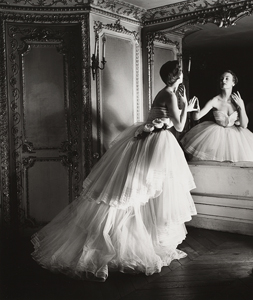
Model in Dior Ball Gown, Paris Photograph by Louise Dahl-Wolfe ©1989 Center for Creative Photography, Arizona Board of Regents
Why did she appeal to you?
SS: The way she uses geometry and textures in her backgrounds. This runs from subdued to wild, and it’s a very striking effect when combined with the elegant way she portrays her models.
To do this kind of thing well is actually very difficult, because it’s easy to end up with a garish, over-the-top mess instead of a clean, refined, pleasing, well put-together look. So in my own work, I’ve experimented with this kind of thing, but I’ve also made it a point to do it well or not at all, which is another important thing I learned from her.
Your work shows and uses female beauty to sell a product, yet seems respectful. Is this a conscious choice?
SS: Definitely. Female beauty is a wonderful and powerful thing and there’s no reason not to want to incorporate it. But there is a line, and beyond it, an image isn’t about beauty, just raunch or sex appeal. Making images like that makes my contribution as an artist less relevant-it’s just selling the girl, selling sex, and all I have to do is hold the camera; my vision becomes secondary. It’s also not very interesting on an artistic level!
One of the things that is really bad is not just images of oversexed, unrealistically beautiful women, but images that specifically show off the youthfulness of the model in a sexual context. The models are adults, but a ton of models are 18 or 19 and hardly look it. And it doesn’t matter how old the models really are, because images like that give women and society a really messed-up idea of what beauty is-underaged, oversexed, flawless. There’s no problem with using young looking models, especially in pure fashion, but they don’t belong in certain sexual kinds of advertising and imagery, in my very strong opinion.
There’s also a difference between work that is all sex appeal and no substance, and images that use sex, but go beyond it. Some of the Calvin Klein ads are good examples of sexy images that are good despite it. The situations are obviously sexual, but they’re well-choreographed, the composition is good, the concepts are strong. They’re not about the model merely showing off her body to get men excited. They use sex, but they’re not smut.
Do you feel there is a difference between men and women who shoot fashion and beauty?
SS: I don’t feel like there’s a really big difference between them, except in the case of photographers who are into really trashy, tasteless kinds of work. Who are men! It’s like they shoot what turns them on, and not what’s artistically challenging or worthwhile. Women tend not to be involved in that kind of stuff because it doesn’t turn them on. Not that there’s anything wrong with making images that appeal to your erotic tastes. Mapplethorpe did it, but it takes a special eye and unique talent to pull it off.
How do you feel about “Photoshopping?€ Where do you draw the line?
SS: I retouch facial imperfections, but makeup is supposed to do the same thing, and no one gets worked up. I personally prefer never to do anything too drastic. If I choose a model, it’s because she has a look that I like, which fits the concept of the shoot, so why would I do anything like rearranging her features? I’m not Picasso! If I wanted someone who looks different, I would have picked someone who looks different. And it’s not a good thing for the model if you give her images to put in her portfolio that have drastic retouching. I once had a go-see for a client (girls come by to audition for a job), and one of the girls they thought would be perfect turned out not to look very much like the photo we saw. Everyone was disappointed.
Changing every feature sucks a lot of the character out of the model, and my clients would never want that to represent them or their brand. And if they did, I would try to persuade them otherwise. Sometimes we’ll have one shot that’s fantastic-great pose, great expression-everything perfect except the shirt flopped out of place, making it look like the model has a really big waistline. So a little bit of Photoshop, and her waistline (and the shirt) shrinks back to where it would have been if there hadn’t been a wardrobe malfunction.
_____________________________________
Louise Dahl-Wolfe was born in in San Francisco in 1895. She studied at the California School of Fine Arts and Columbia University. In 1923, she married Meyer Wolfe, a sculptor who created backgrounds for many of her images, and in 1933 opened a studio, with clients that included Bonwit Teller and Saks Fifth Avenue. From 1936 to 1958, she was a staff photographer for Harper’s Bazaar, and from 1958 to 1960 she did freelance work for Vogue and other publications. Her fashion work inspired many photograhers, including Horst, Avedon and Penn.
Professional Women Photographers gratefully acknowledges the Center for Creative Photography for allowing use of the Louise Dahl-Wolfe photograph, Model in Dior Ball Gown, Paris.
- Catherine Kirkpatrick, Archives Director
______________________________
30 By 30 blog series:


